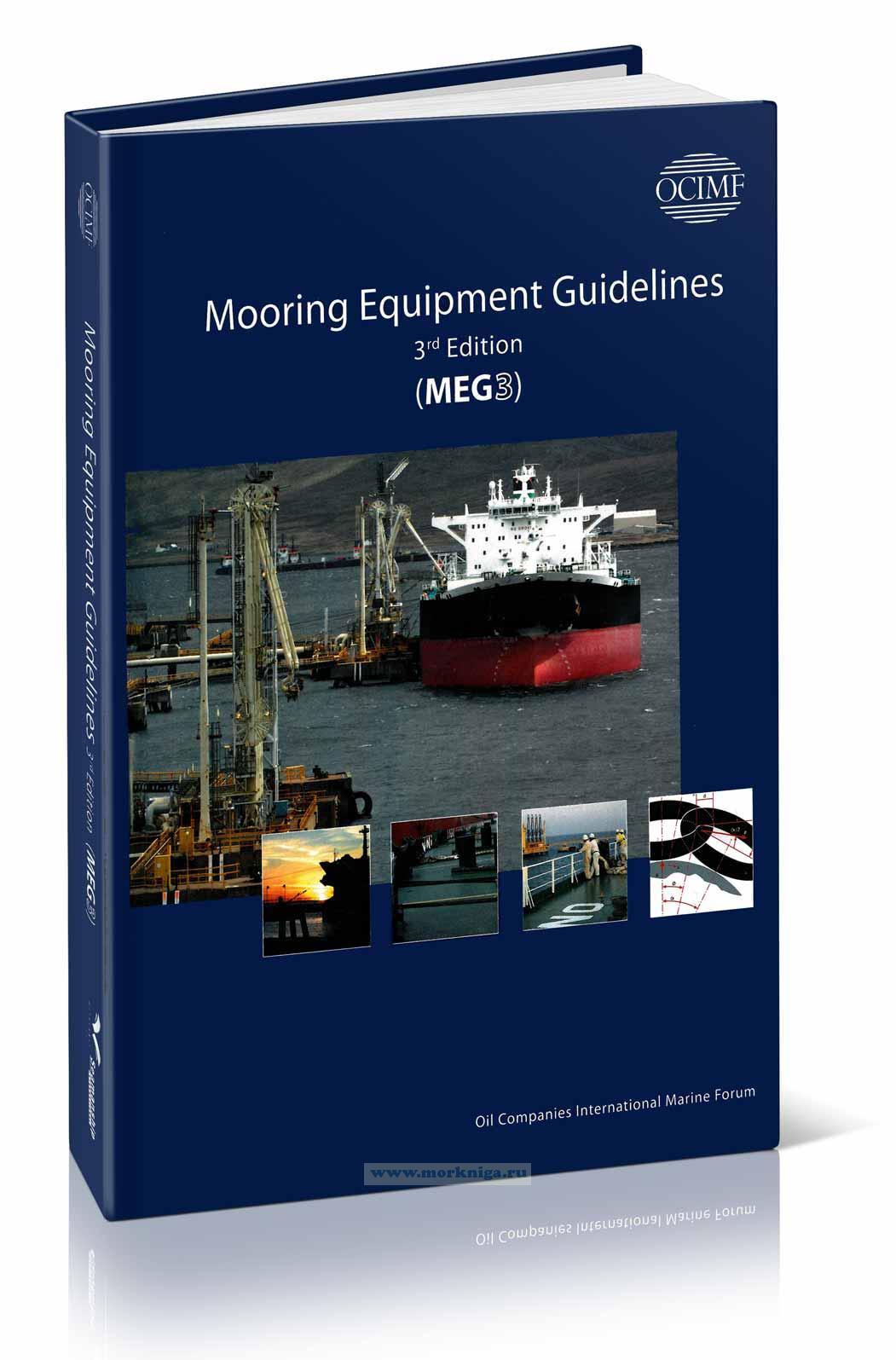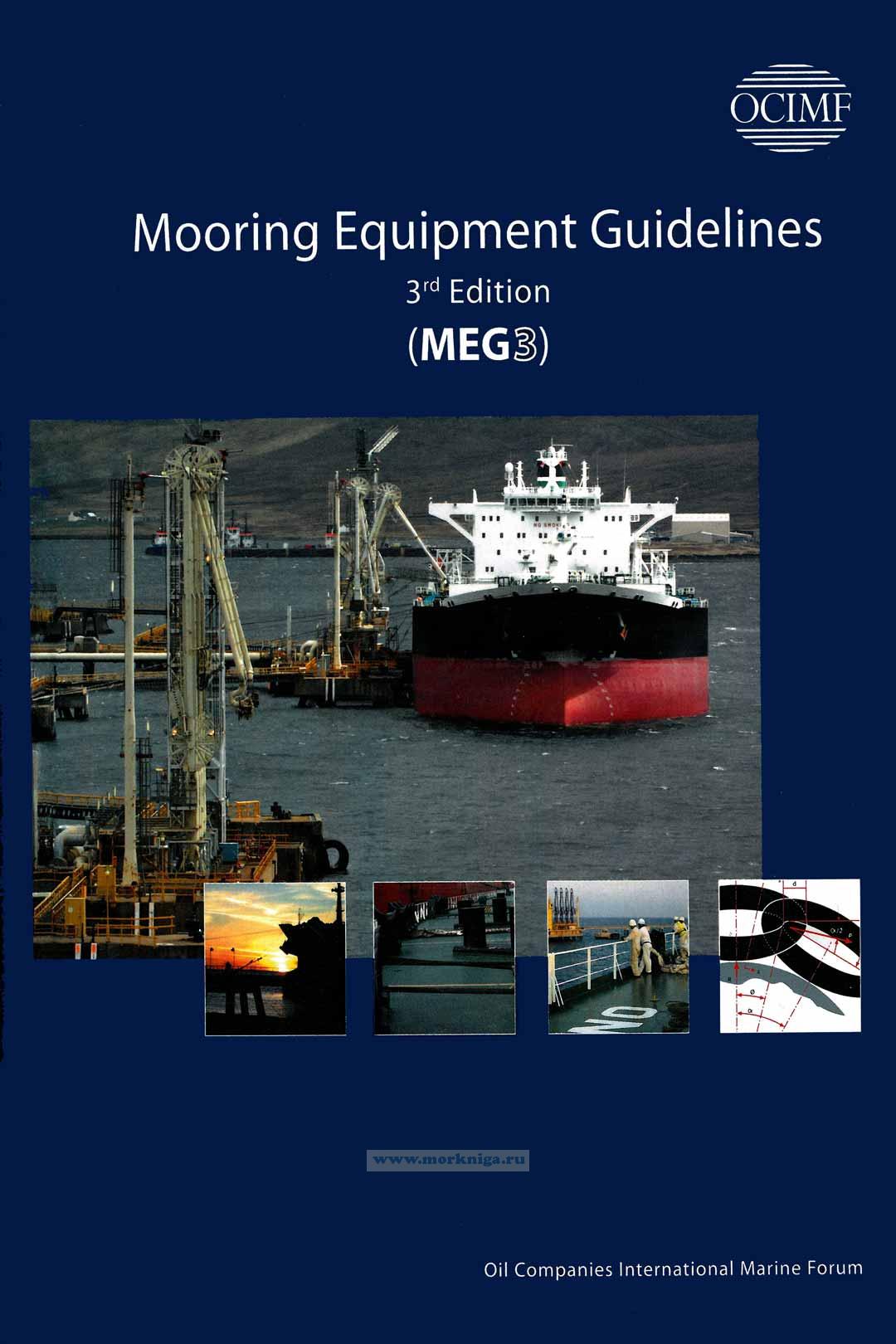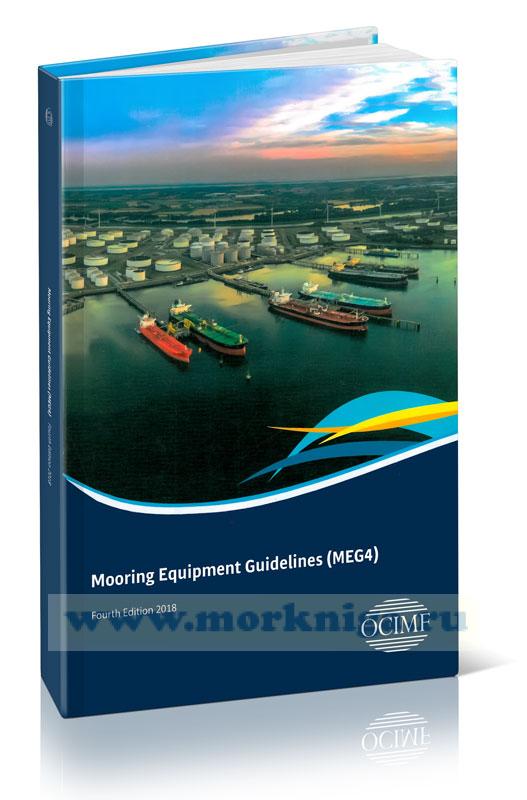Наставление по швартовому оборудованию. Mooring Equipment Guidelines на английском языке
-
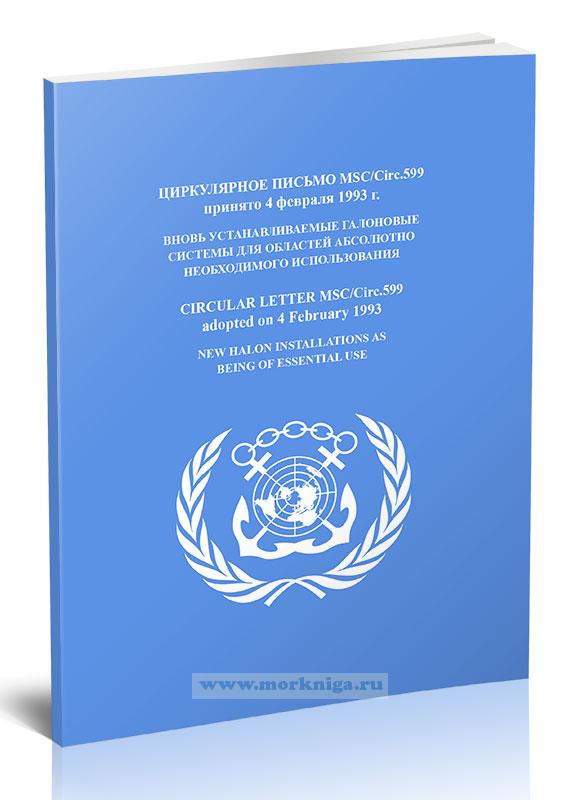 Циркулярное письмо MSC/Circ.599 Вновь устанавливаемые галоновые системы для областей абсолютно необходимого использования
Циркулярное письмо MSC/Circ.599 Вновь устанавливаемые галоновые системы для областей абсолютно необходимого использования
-
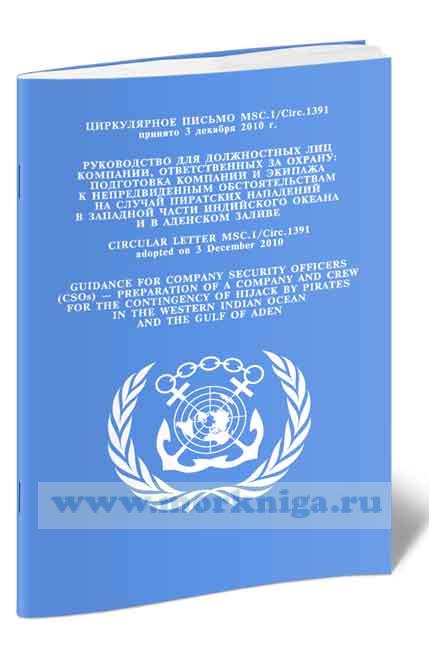 Циркулярное письмо MSC.1.Circ.1391 Руководство для должностных лиц компании, ответственных за охрану: подготовка компании и экипажа к непредв�
Циркулярное письмо MSC.1.Circ.1391 Руководство для должностных лиц компании, ответственных за охрану: подготовка компании и экипажа к непредв�
-
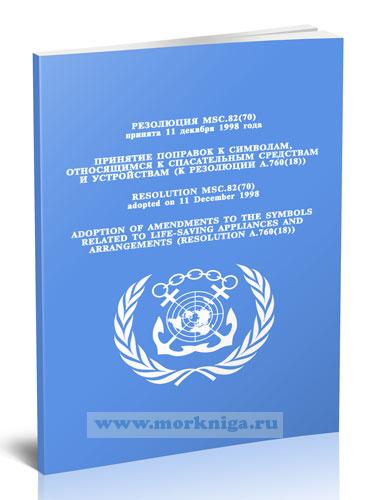 Резолюция MSC.82(70) Принятие поправок к символам, относящимся к спасательным средствам и устройствам (к Резолюции А.760(18))
Резолюция MSC.82(70) Принятие поправок к символам, относящимся к спасательным средствам и устройствам (к Резолюции А.760(18))
The shipping industry has always been concerned with safe mooring practices. A fundamental aspect of this concern entails the development of mooring systems that are adequate for the intended service, with maximum integration of standards across the range of ship types and sizes. To further this aim the Oil Companies International Marine Forum first published Mooring Equipment Guidelines in 1992 and this latest, third edition provides a major revision and update to the original content to reflect changes in ship and terminal design, operating practices and advances in technology.
Although numerous standards, guidelines and recommendations concerning mooring practices, mooring fittings and mooring equipment exist, where guidance is given it is often incomplete. For example, the number of hawsers and their breaking strength may be recommended without any advice on mooring winch pulling force or brake holding capacity. These guidelines provide an extensive overview of the requirements for safe mooring from both a ship and terminal perspective and embrace the full spectrum of issues from the calculation of a ship's restraint requirements, the selection of rope and fitting types to the retirement criteria for mooring lines.
Contents
Introduction List of Figures List of Tables
1 Principles of Mooring
1.1 General
1.2 Forces Acting on the Ship
1.2.1 Wind and Current Drag Forces
1.3 Mooring Pattern
1.4 Elasticity of Lines
1.5 General Mooring Guidelines
1.6 Operational Considerations
1.7 Terminal Mooring System Management
1.7.1 Operating Limits
1.7.2 Operating Guidelines/Mooring Limits
1.7.3 Joint Terminal/Ship Meeting and Inspection
1.7.4 Instrumented Mooring Hooks or Visual Inspection of Mooring Lines
1.8 Ship Mooring Management
1.8.1 Line Tending
1.9 Emergency and Excessively High Mooring Load Conditions
1.10 Limitations on the Use of Tugs and Boats
1.11 General Recommendations
1.11.1 Recommendations for Berth Designers
1.11.2 Recommendations for Terminal Operators
1.11.3 Recommendations for Ship Designers
1.11.4 Recommendations for Ship Operators
2 Mooring Restraint and Environmental Criteria
2.1 General Considerations
2.2 Standard Environmental Criteria
2.3 Calculation of Forces
2.4 Mooring Restraint Requirements
2.4.1 Basic Principles of Mooring Calculations
2.4.2 Standard Restraint Requirements
2.5 Site-Specific Environmental Data and Mooring Line Loads
2.5.1 Most Probable Maximum (MPM) Wave Motions
3 Mooring Arrangements and Layouts
3.1 Principal Objectives
3.2 Requirements at Piers and Sea islands
3.2.1 Number, Size and Type of Lines
3.2.2 Arrangements for Breast Lines
3.2.3 Arrangements for Spring Lines
3.2.4 Special Arrangements for Gas Carriers
3.3 Requirements at SPMs
3.4 Requirements for Emergency Towing, Escorting and Pull-Back
3.4.1 Fittings for Tug Escort and Pull-Back
3.5 Requirements for Multi-Buoy Moorings
3.6 Requirements for Harbour Towing
3.7 Requirements for Barge Mooring
3.8 Requirements for Canal Transit
3.9 Requirements for Ship-to-Ship (STS) Transfer
3.9.1 Requirements for Receiving Ship
3.9.2 Requirements for Discharge Ship
3.10 Arrangements at Cargo Manifolds
3.11 Mooring Augmentation in Exceptional Conditions
3.11.1 Provision of Shore Moorings
3.11.2 Use of Shore-Based Pulley
3.11.3 Advantage of Pulley System
3.11.4 Disadvantage of Pulley System
3.12 EmergencyTowing-off Pennants
3.13 Combination of Various Requirements
3.14 Safety and Operational Considerations
3.15 Equipment and Fitting Line-up
4 Design Loads, Safety Factors and Strength
4.1 General
4.2 Basic Strength Philosophy
4.3 Existing Standards and Requirements
4.4 Recommended Design Criteria
4.4.1 Bitts (Double Bollards)
4.4.2 Single Cruciform Bollard (Single Bitt)
4.4.3 Recessed Bitt
4.4.4 Closed Chock (Fairlead)
4.4.5 Pedestal Fairlead and Rollers of Button-Roller Chocks
4.4.6 Universal Fairlead (4 Roller Type)
4.4.7 Universal Fairlead (5 Roller Type)
4.4.8 Emergency Towing Arrangement
4.4.9 Single Point Mooring Equipment
4.4.10 Mooring Winches
4.4.11 Comparison of Combined Stresses with the 85% of Yield Criterion
4.5 Strength Testing of Mooring Fittings
4.6 Marking of Mooring Fittings
4.7 General Recommendations
4.7.1 Recommendations for Ship Designers
4.7.2 Recommendations for Ship Operators
5 Structural Reinforcements
5.1 Basic Considerations
5.2 Mooring Winches
5.3 Chocks and Fairleads
5.4 Pedestal Fairleads
5.5 Bitts
5.6 Recessed Bitts
5.7 SPM Fittings and Smit Brackets
5.8 Tug Push Points
5.9 Special Considerations
5.9.1 Rounded Gunwale Connection
5.9.2 Doublers versus Inserts
5.9.3 High Strength Steel Fittings
5.10 Certification and Inspection
6 Mooring Lines
6.1 General
6.1.1 General Safety Hazards
6.1.2 Strength Criteria
6.1.3 Elasticity
6.1.4 Record Keeping
6.2 Wire Mooring Lines
6.2.1 Material
6.2.2 Construction
6.2.3 Corrosion Protection
6.2.4 Bend Radius
6.2.5 Handling, Inspection and Removal from Service
6.2.6 Standard Specifications
6.3 Conventional Fibre Mooring Lines
6.3.1 General
6.3.2 Construction
6.3.3 Bend Radius
6.3.4 Handling and Storage of Synthetic Lines
6.4 High Modulus Fibre Mooring Lines
6.4.1 General
6.4.2 Properties of High Modulus Synthetic Fibres
6.4.3 High Modulus Synthetic Fibre Materials
6.4.4 High Modulus Synthetic Rope Constructions
6.4.5 Characteristics
6.4.6 Selection Criteria
6.4.7 Installation
6.4.8 Inspection and Removal from Service
6.5 Synthetic Tails
6.5.1 General
6.5.2 Tail Length
6.5.3 Retirement Criteria
6.5.4 Methods of Connecting Tails
7 Winch Performance, Brake Holding Capacity and Strength Requirements
7.1 Function and Type of Mooring Winches
7.1.1 Automatic Tension Winches
7.2 Winch Drums
7.2.1 Split Drums
7.2.2 Undivided Drums
7.2.3 Handling of SPM Pick-up Ropes
7.3 Winch Drives
7.3.1 Hydraulic Drives
7.3.2 Self-Contained Electro-Hydraulic Drives
7.3.3 Electric Drives
7.3.4 Steam
7.4 Winch Brakes
7.4.1 Layers of Mooring Line on Drum
7.4.2 Band Brakes
7.4.3 Disc Brakes
7.4.4 Input Brakes
7.4.5 Winch Brake Testing
7.4.6 Brake Holding Capacity
7.5 Winch Performance
7.5.1 Rated Pull
7.5.2 Rated Speed
7.5.3 Light-Line Speed
7.5.4 Stall Heaving Capacity
7.5.5 Drum Capacity
7.6 Strength Requirements
7.7 Winch Testing
7.7.1 Rules Concerning Testing at Manufacturer's Facility for the Acceptance of the Manufacturer and Purchaser
7.7.2 Onboard Acceptance Test
7.8 Summary of Recommendations
7.8.1 Recommendations for Ship Designers
7.8.2 Recommendations for Ship Operators
8 Mooring Fittings
8.1 Introduction
8.2 Mooring Bitts
8.3 Cruciform Bollards
8.4 Closed and Panama-Type Chocks
8.5 Roller Fairleads and Pedestal Fairleads
8.6 Universal Roller Fairleads
8.7 Selection of Fitting Type
8.8 Stoppers
Appendices
A Wind and Current Drag Coefficients for VLCCs and Gas Carriers and Example Force Calculation (Including Symbols and Notations)
В Rope Over-Strength
С Guidelines for Handling, Inspection and Removal from Service of Wire Mooring Lines
D Guidelines for Inspection and Removal from Service of Fibre Ropes
E Tanker Mounted SPM Fittings
F Strength of Chain Tensioned over a Curved Surface
Glossary of Terms and Abbreviations Bibliography
Index
